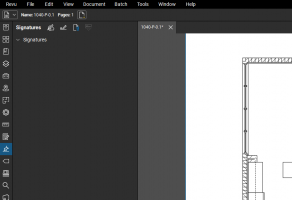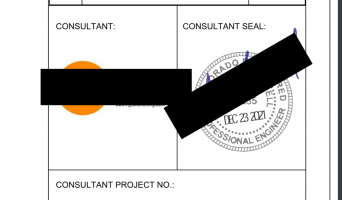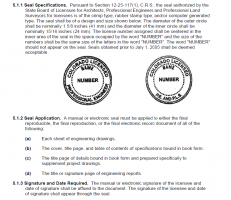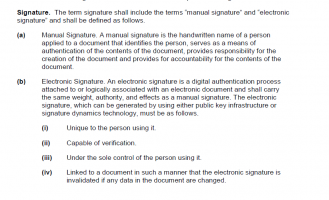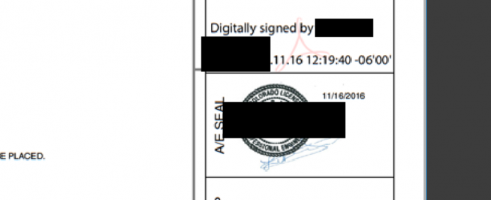Following are two excerpts from the state board. I have a plan in front of me, a pdf reviewed with BB. It has a seal, with a date and signature across the seal. So I wonder how it has come to be. Was it a paper plan, which has been scanned? (That seems unlikely) If the plan is "computer generated" (likely), was the stamp also computer generated? Is a pasted image considered "computer generated? What does "computer generated" mean? (the same rules apply to architects)
This is good example and the norm, but I do see lots that are barely legible, obviously scanned. I often get letters and emails directly from DP's with a seal and signature in the same manner. If these methods are not acceptable, should they not be on top of this? Occasionally I do get "electronic" signatures, and sometimes the actual seal disappears. Is that what is supposed to happen? This seems like a mess. If there are definite protocols then they should be policing themselves, and informing us how we can determine the validity of their documents....if they want us to. I recently had two occurrences of a contractor taking a page, adding designs they created, and submitting it as a revised page. In these cases, the revisions were suspect for various reasons, I called the DP, and he knew nothing of them. In both cases, there were no consequences! My guess is that this happens far more than we realize, but based on my experiences, the DP's don't seem to care.
View attachment 8454
View attachment 8452View attachment 8453


